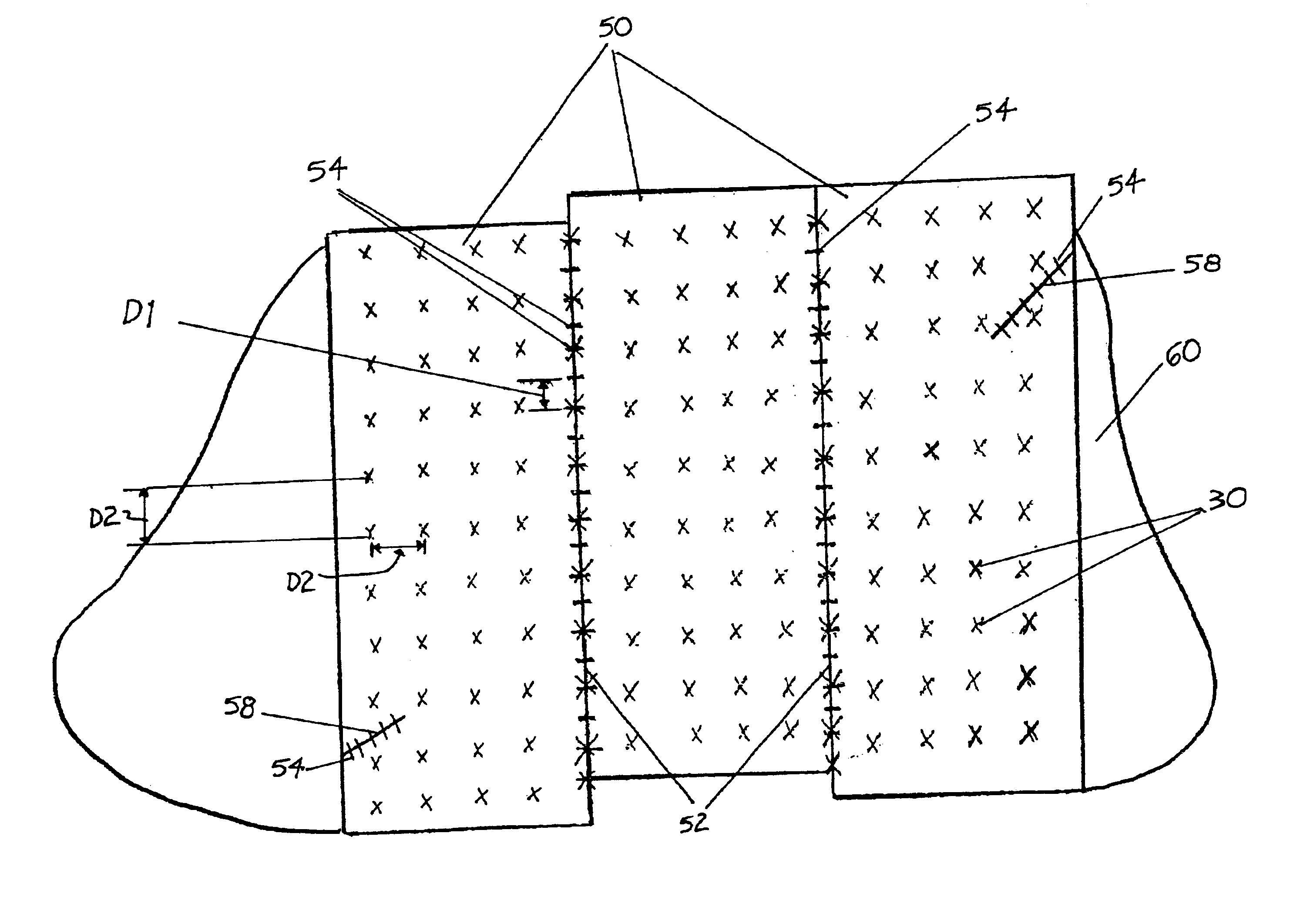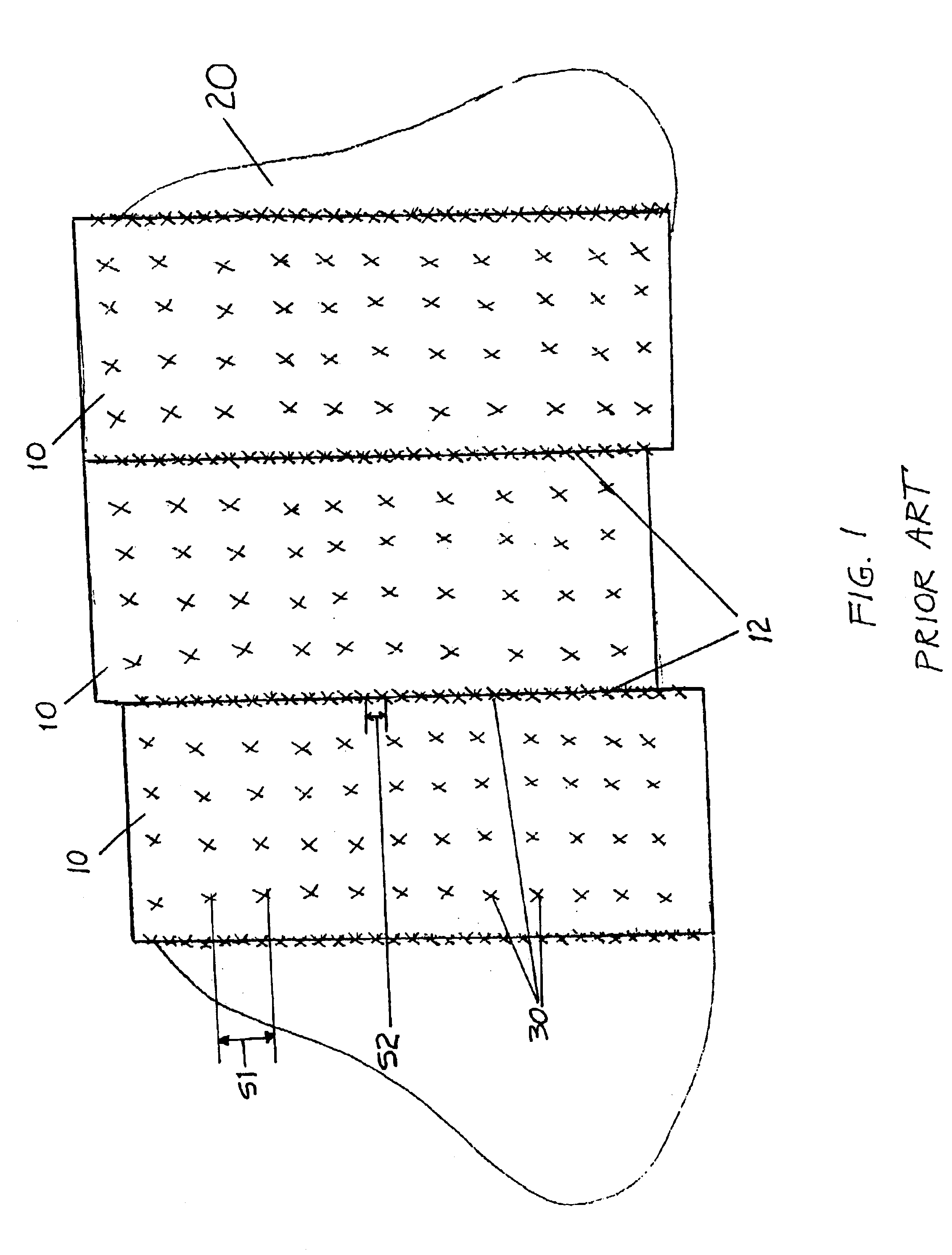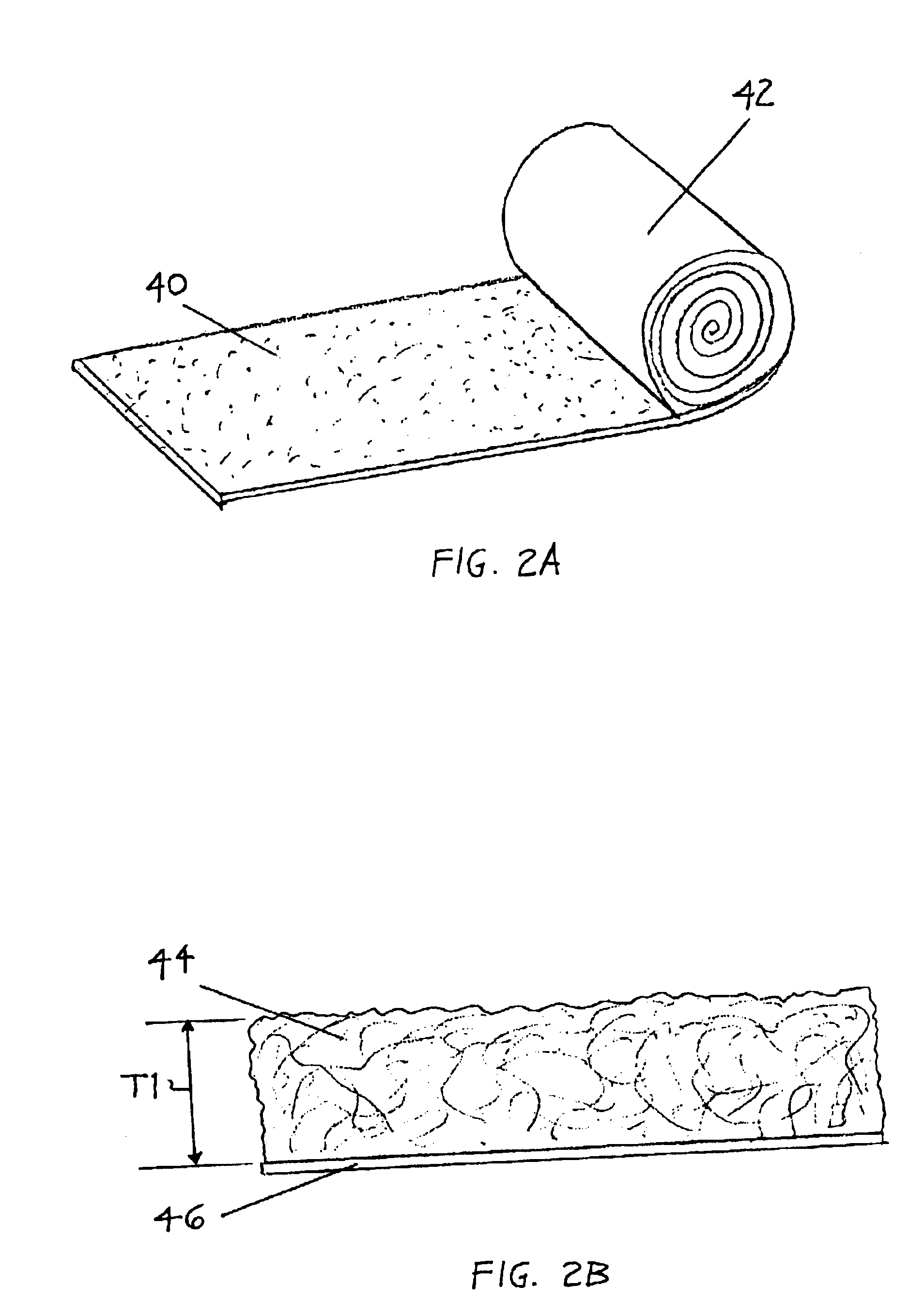Method and material for preventing erosion and maintaining playability of golf course sand bunkers
a technology of golf course and sand bunkers, applied in the field of geotextile liner, can solve the problems of golf course maintenance crews, time-consuming process, and difficulty in maintaining the playability of the bunker, so as to prevent the downward migration of sand, prevent erosion, and maintain the playability of the golf course sand bunker
- Summary
- Abstract
- Description
- Claims
- Application Information
AI Technical Summary
Benefits of technology
Problems solved by technology
Method used
Image
Examples
Embodiment Construction
Reference is now made to FIG. 1, which is an illustration of a prior art method for installing an erosion control mat in a golf course sand bunker. A plurality of sheets of erosion control fabric 10 are laid within an unfilled sand bunker 20. Sheets 10 are anchored to the underlying soil using sod staples 30, which as known in the art, are hand-driven, “u-shaped” objects typically on the order of six to twelve inches in length and formed of heavy gauge wire, e.g., 11 gauge. The length of sod staple used in a given application will depend on the soil conditions at the bunker site, e.g., type of substrate, hardness, etc. FIG. 4 shows a typical sod staple 30 having a length L, which may range from six to twelve inches. As shown in FIG. 1, prior art installation guides recommend securing sheets 10 to the underlying soil with sod staples spaced a distance S1 within a given sheet 10. S1 is typically on the order of twelve inches. The seams 12 between adjacent sheets 10 are joined with sod...
PUM
| Property | Measurement | Unit |
|---|---|---|
| length | aaaaa | aaaaa |
| distance | aaaaa | aaaaa |
| width | aaaaa | aaaaa |
Abstract
Description
Claims
Application Information
 Login to View More
Login to View More - R&D
- Intellectual Property
- Life Sciences
- Materials
- Tech Scout
- Unparalleled Data Quality
- Higher Quality Content
- 60% Fewer Hallucinations
Browse by: Latest US Patents, China's latest patents, Technical Efficacy Thesaurus, Application Domain, Technology Topic, Popular Technical Reports.
© 2025 PatSnap. All rights reserved.Legal|Privacy policy|Modern Slavery Act Transparency Statement|Sitemap|About US| Contact US: help@patsnap.com



